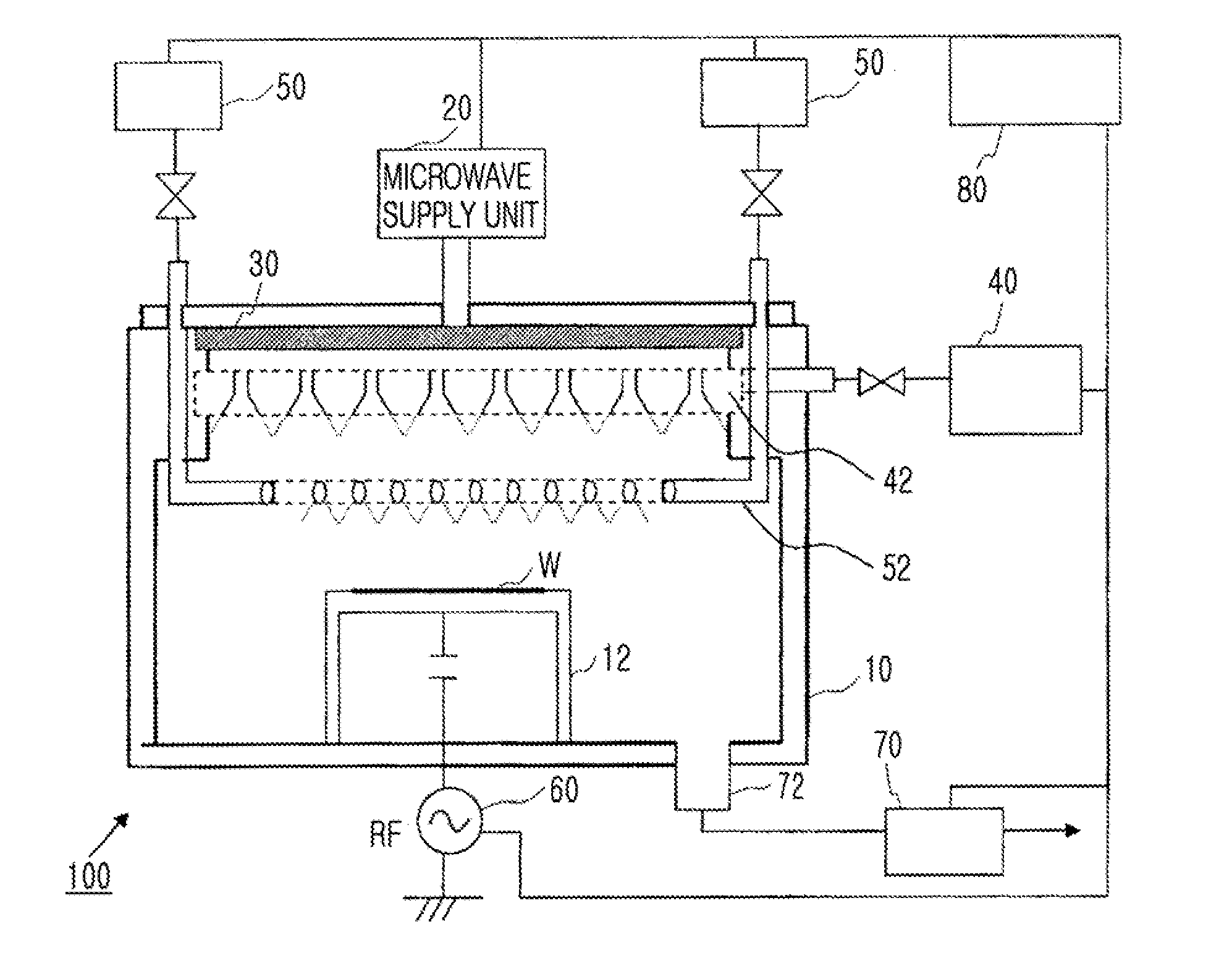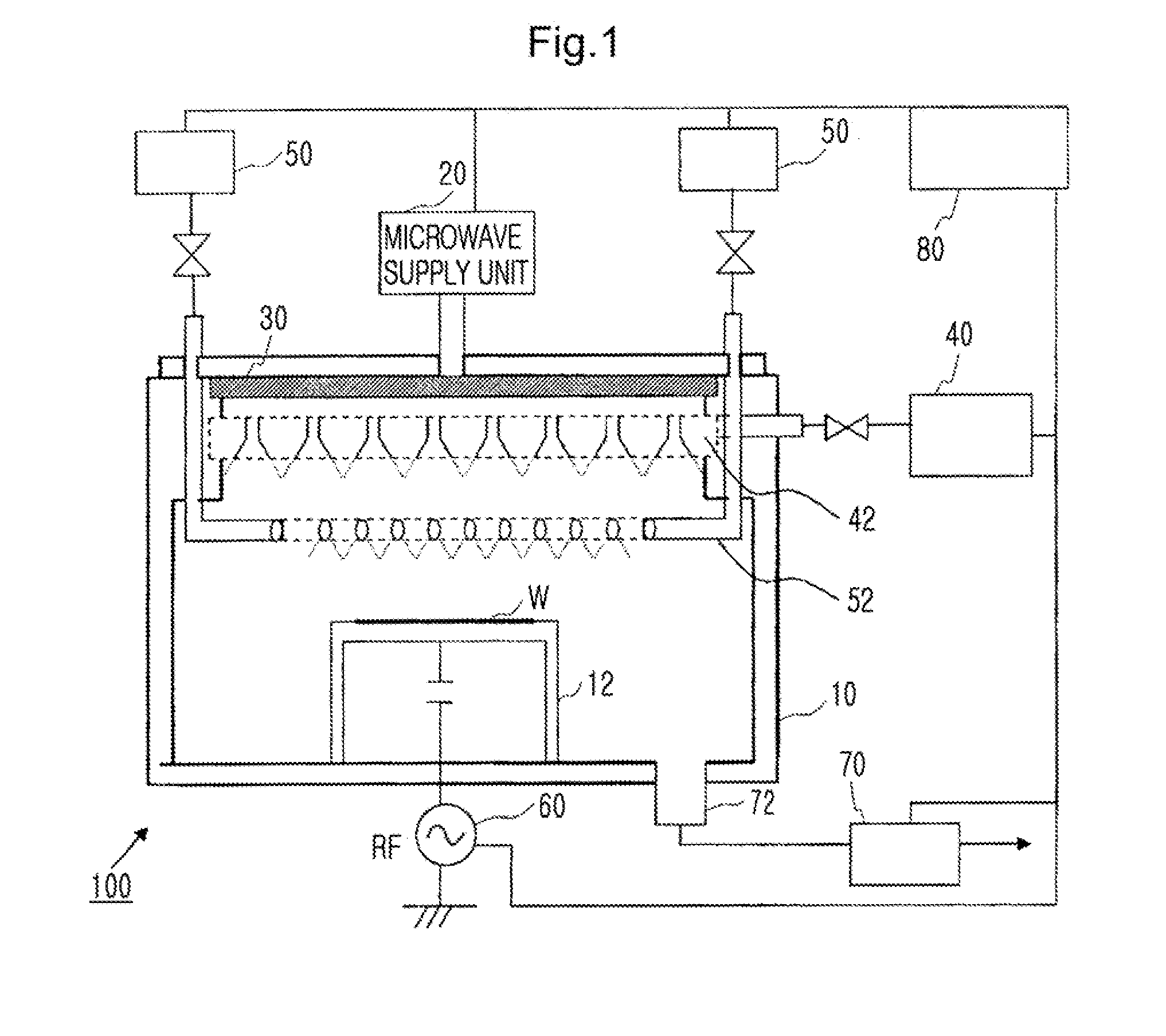Method for manufacturing photoelectric conversion elements
a technology of photoelectric conversion elements and apparatus, which is applied in the direction of sustainable manufacturing/processing, final product manufacturing, coatings, etc., can solve the problems of unavoidable burden of excessive cost(initial cost), limited resources, and conventional petroleum resources, and achieve low oxygen concentration, high speed, and reduced defect density of films
- Summary
- Abstract
- Description
- Claims
- Application Information
AI Technical Summary
Benefits of technology
Problems solved by technology
Method used
Image
Examples
Embodiment Construction
[0050]Hereinafter, the present invention will be described in detail by explaining exemplary embodiments of the invention with reference to the attached drawings.
[0051]FIG. 1 is a conceptual view showing a schematic overall structure an apparatus for manufacturing photoelectric conversion elements, according to an embodiment of the present invention. Here, the apparatus for manufacturing a photoelectric conversion element is shown as an example for implementing the technical idea of the present invention. However, the idea of the present invention can be applied to a general film-forming apparatus for a semiconductor, and the following description includes descriptions of embodiments of the present application as a film forming apparatus•a film forming method. In the same drawing, only elements required for description of the present invention are shown, and a conventional technology has been employed for the other items.
[0052]As shown in the same drawing, a photoelectric conversion...
PUM
| Property | Measurement | Unit |
|---|---|---|
| temperature | aaaaa | aaaaa |
| defect concentration | aaaaa | aaaaa |
| radio frequency | aaaaa | aaaaa |
Abstract
Description
Claims
Application Information
 Login to View More
Login to View More - R&D
- Intellectual Property
- Life Sciences
- Materials
- Tech Scout
- Unparalleled Data Quality
- Higher Quality Content
- 60% Fewer Hallucinations
Browse by: Latest US Patents, China's latest patents, Technical Efficacy Thesaurus, Application Domain, Technology Topic, Popular Technical Reports.
© 2025 PatSnap. All rights reserved.Legal|Privacy policy|Modern Slavery Act Transparency Statement|Sitemap|About US| Contact US: help@patsnap.com



